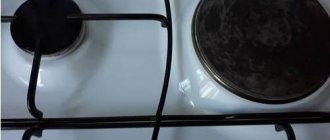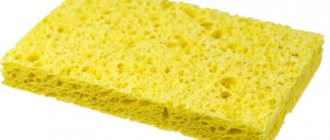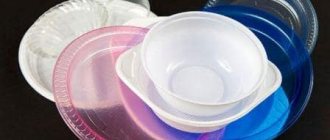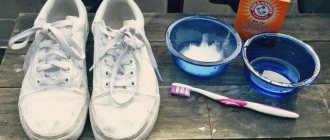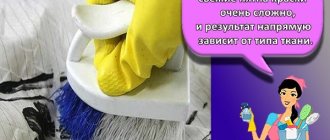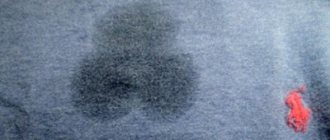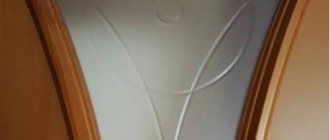Can you cook dinner on a cold stove? It is possible if it is induction. These new products are distinguished by an innovative operating principle and a special heating method. They do not consume electricity to heat the burners, like conventional electric stoves. Their thermal energy is directed exclusively to the dishes.
The risk of carbon deposits is minimized. Nothing burns or sticks here. But even a very careful housewife will have dirt on her induction hob from time to time. In this article you will learn how to clean an induction hob.
How to clean an induction cooker
Induction cookers can be cleaned with household and folk remedies that do not contain abrasive particles, so as not to scratch the surface.
Stove cleaner
The stores offer many cleaning compounds designed specifically for caring for glass-ceramic stoves. They cope well with any fresh dirt. If you wash the panel every day, it is enough to keep it clean with one special product and a sponge.
It is better to use a spray or cream:
- Apply the product to the cooled surface.
- Rub with a soft sponge.
- Remove foam with a damp cloth.
- Wipe with a dry cloth.
- Polish with a paper towel or soft cotton cloth until shiny.
Instead of a special spray, regular dish gel will do. But you shouldn’t apply it undiluted to the stove, so you don’t have to wash off a lot of foam. You need to dilute a few drops in water and moisten the sponge in a soap solution.
Ammonia
If you don’t have a glass ceramic product on hand, ammonia can replace it.
Ammonia successfully copes with greasy stains:
- Dilute the ammonia solution with water in a ratio of 1 to 5.
- Pour the mixture into a container with a spray bottle.
- Spray the surface of the stove.
- Wait 10 minutes.
- Wipe with a soft dry cloth.
It is advisable to complete each panel cleaning with polishing.
Baking soda
Another means for cleaning the stove is regular baking soda:
- Make a thick paste from baking soda and water.
- Apply to stains and leave for 5-7 minutes.
- Carefully, without pressing, remove the soda with a damp cloth.
- If dirt remains, reapply a little paste and sprinkle with vinegar.
- When the mixture stops bubbling, wash it off with a tissue.
- Rinse, wring out the cloth well, wipe.
Repeat the last step until the surface becomes clean, dry and shiny.
Top tip
So that you don’t have to hastily look for how and what to clean your induction hob from dirt, carbon deposits and other troubles, it is best to ensure perfect daily care for it. There is nothing complicated about this - immediately after the hob has cooled down, remove any pieces of food that have fallen on it and treat the surface with a handy detergent. And then rinse with clean water and dry with paper napkins or towels.
Just a couple of minutes a day - and your stove will always delight you with a neat appearance and a highly polished surface.
How to remove heavy stains
It is not always possible to carefully care for the stove every day, and no one is safe from “escaped” porridge. To clean the panel from burnt marks and dried-on food, you will need a special scraper for glass ceramics. Do not scrape dirt with sharp objects, rub with steel wool, a hard sponge, or powder abrasives. This may damage the coating.
You need to act carefully:
- Soften the dirt. Moisten the surface with a hob care product from a spray bottle and leave to soak. The second method is to place a wet rag soaked in a cleaning solution on the stain and hold it for 10-15 minutes.
- Remove dirt. Scrape off the softened dirt with a scraper, holding it at an angle of 45°.
- Wash the stove. Use a damp cloth to remove any remaining soap and wipe the entire surface.
- Wipe dry and polish with paper.
If stains are stubborn, repeat steps 1 and 2 until all dirt is removed.
Removing scratches
Most often, scratches on the surface of the induction hob are so minor that they can only be seen in good lighting. But, if there are a lot of them, it’s worth polishing. GOI polishing paste, sold in auto supply stores, is best suited for this purpose. It is produced under numbers (1, 2, 3, 4). The first three types are gentle and mask minor scratches well. Number 4 contains abrasive particles and is used in conjunction with a felt sanding attachment.
The polishing process is quite labor-intensive, but the surface becomes perfectly smooth and sparkling.
If the surface is covered with cracks and chipped, the top layer will have to be completely replaced.
How to clean various stains
The key to a clean induction hob is daily care and quick removal of dirt. It is especially important to act quickly if sugar or pieces of plastic come into contact with a hot surface - they melt, and it is not easy to clean them after they harden. If you do not constantly maintain order, dirt, grease and dried food residues form a persistent coating that can damage the stove.
Nagar
Crumbs, oil splashes, fallen pieces of food and escaped milk that are not removed from the cooking surface turn into soot. You won’t be able to get rid of neglected dirt with one movement of your hand. You can’t cope with carbon deposits without household chemicals and a scraper.
Detergent for dishes or induction hobs should be applied liberally to the dirty area and left for 20-40 minutes. During this time, the carbon deposits will become wet and move away from the surface. It can be carefully scraped off.
Fat
To remove grease deposits from the stove, it must be dissolved. You will need dish gel or glass ceramic panel cleaner undiluted. Do not use household chemicals labeled “anti-grease”; they are too aggressive for cleaning the induction surface. Split plaque can be easily removed with a soft sponge.
Sugar
Baking on the hot surface of the stove, the sugar turns into a hard caramel crust. It can damage the ceramics and cause cracks, especially if you try to scrape it off.
The melted sweet mass is removed with a silicone scraper. Then you need to cool the stove and remove any remaining sugar by dissolving it in one of the following ways:
- pour warm water over the stain;
- place a sponge on top, generously moistened with soapy water;
- apply slab cleaner.
As soon as the sugar crust melts and begins to move away from the surface, you can use the scraper, and then continue according to the already known algorithm.
Milk
Burnt milk from glass ceramics is removed by vegetable oil:
- Moisten a cotton pad, sponge or gauze with sunflower/olive oil.
- Cover the stain and leave for half an hour.
- The milky coating under the oil “compress” should soften and be easily removed with a sponge or scraper.
If a greasy residue remains after cleaning, the stove should be washed again with dish soap.
Raid
Glass-ceramic appliances sometimes develop whitish circles that cannot be wiped off with anything. The glossy surface becomes cloudy and loses its shine.
The main reason for the white coating is incorrectly selected dishes. For induction, special pots and pans are used: their thickened bottoms are magnetized to the burners, and due to the durable, damage-resistant metal, they do not scratch the panel.
Scale can be removed from glass ceramics using a folk remedy:
| Ingredients | Quantity |
| water | 200 ml |
| White Spirit | 200 ml |
| Apple vinegar | 2 tsp. |
Apply the mixture to the surface, then wipe with a damp cloth and polish with a cotton cloth. If you don’t have a solvent on hand, you can replace the recipe with lemon juice.
Divorces
After cleaning, stains remain on the glossy surface. To avoid them, you must:
- rinse off the detergent thoroughly;
- always wipe the stove dry;
- polish with a soft cloth or paper napkin.
Quality stovetop products contain ingredients that prevent streaking. But if stains remain, window liquid will help: spray and rub.
Recommended detergents
Before you go to the store, get the instructions for your stove and be sure to read the list of products that can be used for cleaning. Often the manufacturer even indicates specific names.
If the instructions are lost or there is no useful information in it, then you can enlist the experience of those who successfully keep their stove clean and tidy. So, take note of the following products - they can be found in stores and are not that expensive:
- Top House - often sold in a set with a scraper, blades and a special napkin (the set costs 600 rubles - quite affordable);
- Dr. Beckmann is an effective gel with a dispenser; it has a slightly chemical smell, but it does a great job even on old stains;
- Vitro Care - the manufacturer claims it is an environmentally friendly and safe product, removes stains with a bang and is quite economical in consumption.
But you should be careful with glass and mirror cleaning products. Of course, if you decide to use this method once, then nothing bad will happen. But if such care becomes systemic, there is a high risk of trouble in the future.
How to clean a white induction hob from carbon deposits
The color of the panel is a matter of taste; it does not in any way affect the characteristics of the device. Caring for black and white surfaces is no different.
On black glass ceramics you should expect streaks, white deposits and fingerprints; light ones are prone to yellowing.
On white, a greasy coating and residue from dishes catches the eye. Pots and pans must be clean. If the bottom is not properly cleaned or has previously come into contact with a gas burner, dirty marks will remain on the white hob. The main thing is not to clean the glass with abrasives; otherwise, you can use the same products as for black slabs.
Which rag is better to wash the stove?
To care for the stove you will need:
- a soft cloth or sponge without a rough abrasive layer;
- cotton or microfiber napkins for wiping;
- paper towel for polishing.
All cloths and sponges for the stove should be separate; you should not use those used to wash dishes or wipe the table. It is worth getting a scraper for glass ceramics.
What is prohibited to do
No matter how much you would like to clean the glass-ceramic panel with powder or “vigorous” plumbing liquid, there is no need to do this. Aggressive means can disable it.
What else should not be done when using the stove:
- use equipment not intended for induction devices;
- move dishes along the hob;
- place wet dishes on the burners;
- scrape with steel wool, rough sponges, knives;
- expose the device to temperature changes;
- wash the switched on stove.
For safety, the device must be unplugged before cleaning.
How to care for your stove after cleaning
The main rule of caring for an induction cooker is to keep it clean at all times, before, during and after cooking:
- wipe the surface before work to prevent unnoticed stains from burning;
- Remove fallen food, spilled liquids, and oil splashes immediately, without waiting for them to dry;
- monitor the cleanliness and smoothness of the bottom of all dishes that fall on the panel to prevent the formation of soot and scratches;
- Do not leave drops of water on the surface, always wipe dry.
It is advisable to use household chemicals intended for stoves. These are expensive products, but they are very economical. One bottle lasts for several months of use.
Special formulations contain ingredients that make it easier to care for glass ceramics: glycerin, petroleum jelly. These substances add shine and protect the surface from scratches, and repel dirt and liquid. After cleaning, you can rub Vaseline or baby oil into the panel - this will prevent the appearance of severe dirt.
Additional recommendations
To extend the life of the ceramic surface, it is not enough to use only a suitable cleaning product for the induction hob. It is necessary to adhere to additional recommendations during operation:
- Only use suitable cookware designed for induction cookers.
- Dishes can only be placed on the surface with a dry bottom.
- Do not move dishes that are on the glass-ceramic surface to another place. This will cause scratches.
- It is better not to use powdered products, as they may not completely dissolve in water. Undissolved particles can cause scratches.
It is also important to ensure that sand and dirt do not get on the stove. This can happen if you peel vegetables near the stove. Proper organization of your kitchen workspace will help you avoid this.

